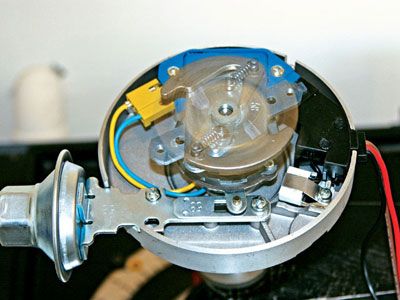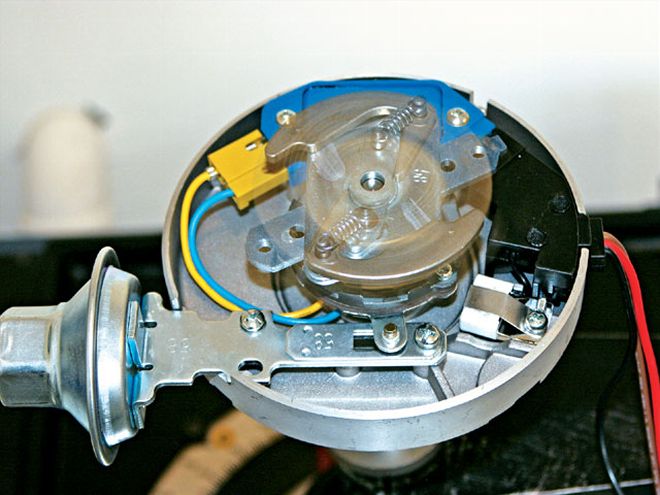

Engine components produced during the '70s smog-era were oftentimes aimed at reducing emissions and typically had an adverse affect on performance, lending to their negative hobbyist perception. That wasn't always the case, however, and it certainly wasn't true at Pontiac. Since tailpipe emissions and fuel economy were great concerns during that time, Pontiac engineers focused on improving production consistency by tightening component tolerances and utilizing low-maintenance designs.
Attempting to boost output from their smog-era Pontiac engine, hobbyists oftentimes seek the high-dollar '60s and early '70s performance pieces. Years of research and testing, however, indicate that, from a performance standpoint, little separates the smog-era cylinder head, intake manifold, and M4M Quadrajet castings from their early-year counterparts. In some instances, the later units actually contain greater performance potential-a true testament to the efforts of the Pontiac engineering team.
Another smog-era component that's proven itself worthy in myriad applications is the High Energy Ignition (HEI) system. HEI is a totally self-contained unit that offers as much as 35,000 volts of spark energy with proven reliability, and is an excellent alternative to the high-dollar aftermarket ignition systems many choose for street or moderate race applications. With so many used units available today, an HEI can oftentimes be purchased reasonably from salvage yards or at swap meets, but they aren't always reusable.
Follow along as we explore the critical wear areas and prepare a used HEI for many miles of low-maintenance enjoyment.
Ignition Basics
An ignition system is responsible for igniting the compressed air/fuel mixture within a cylinder. Combustion pressure drives the piston downward in its bore, applying torsional force on the crankshaft, also compressing the mixture in an adjacent cylinder. Since complete combustion requires a fixed amount of time, the distributor physically alters the initial combustion point, depending on engine load and/or piston speed. Referred to as "spark advance," it's measured in degrees of crankshaft rotation and uses piston travel towards and away from Top Dead Center (TDC) as its reference point.
The breaker points within a conventional distributor are what transfer electrical current from the coil to the spark plug. A magnetic field builds within the coil while the points are closed, and the duration that the points remain closed is referred to as dwell angle. When the points open and the magnetic field collapses, the result is an intense electrical spark that travels the air gap from the spark plug's electrode to its ground strap, effectively igniting the compressed mixture.
Dwell angle changes as the breaker points wear, and as dwell exceeds its specified range, spark intensity degrades (and spark advance changes), subsequently affecting emissions and performance. Periodic breaker point adjustments and eventual replacement are required to maintain peak performance and minimal emissions. While such maintenance may seem minute today considering how little our Pontiacs are driven, it was, however, a major concern for manufacturers when forced with long-term emissions compliancy back in the '70s.
Electronic Ignition Systems
The Delco-Remy division of General Motors was responsible for a number of innovative electronic designs, and one of those was a breakerless ignition system. Used by Pontiac in the '60s and marketed as its Transistorized Ignition system, it was fairly complex and used an electronic module to trigger coil firing instead of conventional breaker points. While very reliable in operation, the system ultimately gave way to the Unitized Ignition system released towards the end of the '71 model year.
As we learned in "Unitized Ignition, Anyone?" (HPP, Mar., '04), the Unitized Ignition system was completely self-contained and required only a single 12-volt power lead for normal operation. While not necessarily offering any additional spark intensity, Unitized was touted in sales literature as requiring no periodic maintenance, improving wet-weather performance, and providing consistent spark output at all engine speeds. Unitized seemed to be a popular option and was available on most 400 and 455 4-barrel applications through midyear 1974.
On April 4, 1974, however, Pontiac issued to its dealers' service department Technical Service Bulletin 74-I-30, informing them that in early May, a new High Energy Ignition system would replace both the conventional and/or Unitized systems as the standard ignition on nearly all 400 and 455ci engines.
The bulletin went on to say that HEI offered extended spark plug life, and that its increased spark intensity was beneficial when igniting lean mixtures and those diluted by EGR. It revealed a plethora of revised engine codes for the affected applications, as well as a detailed troubleshooting chart and servicing procedures. It also boasted that the HEI contained just nine electrical connections-eight of which are for spark plug wires
Pontiac used HEI exclusively on all its V-8 engines from 1975 forward, and the design remained unchanged throughout much of that time. It was, however, revised slightly when Computer Command Control (CCC) was introduced during the '80 model year. In these instances, the mechanical and vacuum advance components were replaced by electronics that controlled spark advance entirely. As the number of Pontiac V-8 engines with CCC increased in 1981, the division no longer used a conventional HEI.
Selecting An HEI
Finding a used Pontiac HEI isn't a difficult task. What can be difficult, however, is locating one in good, reusable condition. While replacements for electronic components are usually just a trip to the local parts store away, other commonly worn or damaged pieces, like the internal bushings and mainshaft, are very difficult to replace.
Of the two bushings that support the mainshaft, the lower bushing is most commonly worn. While the upper bushing is surrounded by a grease-filled well, the lower bushing relies on engine oil mist migrating upward from the camshaft area for lubrication. Sludge deposits commonly found in engines lacking routine oil maintenance can clog the distributor housing's internal passageways, limiting lubrication. This can lead to scoring of the mainshaft and severe elongation of the bushing during normal engine operation. See the enclosed photos and captions to learn more about how to choose a rebuildable HEI.
Conclusion
The HEI is quite possibly the most versatile ignition system ever developed. Without any significant design changes over the years, it's as effective today as when introduced 33 years ago. Just remember, while hunting for a usable candidate or trying to rejuvenate an original, the general condition of its mainshaft and lower bushing may determine its fate. After complete disassembly for cleaning, inspecting, lubricating, and calibrating to match your application's spark advance requirements, the HEI should provide many thousands of miles of reliable, low-buck performance.